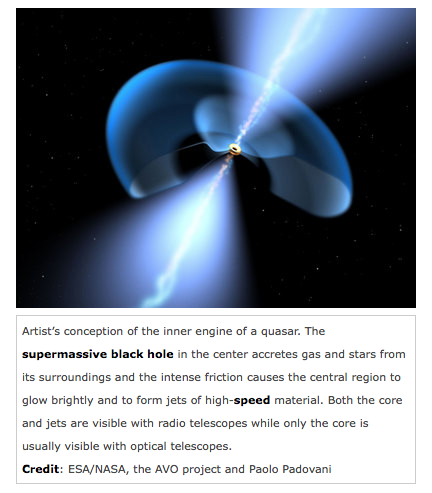
Observational studies have shown that most, if not all, galaxies contain a supermassive black hole (SMBH) in their centre. In some systems these SMBHs are active, i.e., the central region of these galaxies is more luminous than the remaining galaxy light. These sources are called Active Galactic Nuclei (AGN). The most luminous systems among AGN are the quasars (QSOs). Although QSOs are very bright, they cannot be observed without using telescopes. This is due to their large distances from us. Some of them are so distant that they were created less than 1 billion years after the Big Bang!!
Studying the most distant QSOs is very important for astrophysicists. These exotic objects can provide us with a wealth of information about e.g., the mechanisms that formed these large black holes so early in the universe and put constraints to the Big Bang model. Distant QSOs are also important from a cosmological point of view. For example, using their spectra, is one means of studying the reionization era of the universe.
Scientists have used a variety of methods to detect quasars at large distances. The current record holder is a quasar that lies at redshift, z=7.54, i.e., it was created when the universe was only 690 million years old (the age of the universe today is ~14 billion years old)!!! Observations revealed that the mass of its black hole is 800 million times the mass of our Sun! The object was also recently observed in X-rays using the Chandra X-ray satellite observatory. The goal of the X-ray observations was to obtain the X-ray spectrum of the source and derive useful information about the spectral parameters. Its X-ray properties were also compared with those of similar systems at smaller distances.
Deeper X-ray detections, however, using either the Chandra or the XMM-Newton X-ray space telescopes will be crucial to shed light on the mechanisms that are active inside these enigmatic sources. Furthermore, according to the authors of the relevant study, future X-ray observations will open up the exciting prospect of testing the cosmological model when the universe was only 5% of its current age,
Publications: Ban ̃ados et al. 2018a, Ban ̃ados et al. 2018b
